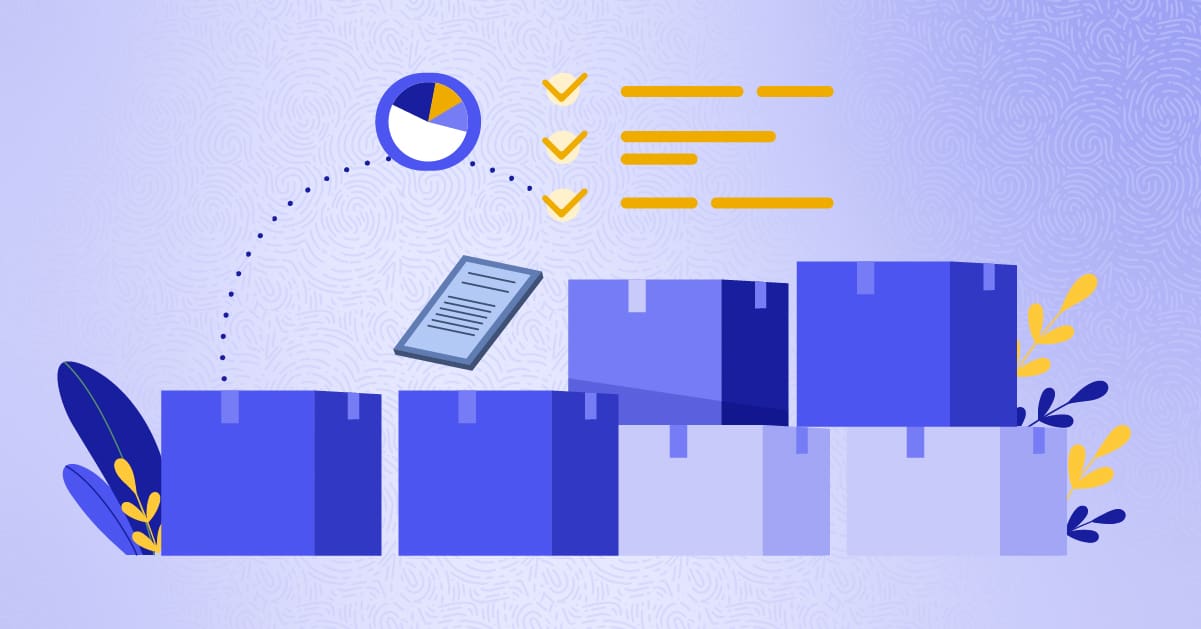
Amazon Order Handling Capacity: Tips for Managing Growth and Volume

As an Amazon seller, you know the importance of order handling. When sales are steady, things feel manageable, but what happens when demand surges? Suddenly, you’re dealing with delayed shipments, inventory mismatches, and unhappy shoppers flooding your customer service inquiries.
Whether you struggle to keep up or are planning for future growth, mastering order handling capacity on Amazon Seller Central is key to your long-term success. To help you reach that accomplishment, this article will break down the challenges sellers face as order volume increases. We’ll also tackle how to scale efficiently without sacrificing speed, accuracy, or customer satisfaction.
Understanding order handling capacity
Order handling capacity is the backbone of your eCommerce operations. It’s the maximum number of orders your business can process without delays, errors, or straining your resources. The greater your capacity is, the more smoothly your business runs, especially as sales grow.
Several factors influence this number, including:
- Inventory management
- Fulfillment process efficiency
- Order processing systems
If any of these areas break down, it can lead to stockouts, late shipments, or even Amazon account penalties. To add to the complexity, scaling on Amazon comes with its own challenges, from managing Fulfillment by Amazon (FBA) or Fulfilled by Merchant (FBM) logistics to keeping up with strict performance metrics. That’s why understanding and optimizing your order handling capacity is essential for your brand to thrive.
The role of Amazon Seller Central in order handling
Amazon Seller Central is more than just a place to list your products — it’s your control center for managing every step of the order procedure. Whether you want to track inventory, process shipments, or analyze sales performance, this platform gives you the ability to handle orders efficiently and keep customers happy.
With Amazon Seller Central, you can access powerful tools that help you manage orders systematically, like:
- Inventory management tools: Monitor stock levels in real time and prevent overselling.
- Order processing dashboards: Track and fulfill orders quickly to meet Amazon’s strict shipping deadlines.
- Performance insights and reports: Identify trends, spot bottlenecks, and optimize efficiency before small issues become major problems.
Strategies to maximize order handling capacity
Scaling your order handling capacity doesn’t have to be overwhelming. Below, we’ve outlined a few strategies to help you process more orders while maintaining high performance.
Leverage Amazon’s fulfillment options
Amazon offers two main fulfillment options: FBA and FBM. The method you choose can significantly impact your capacity. Here’s how each one functions:
- FBA: Amazon handles storage, packing, and shipping, so it’s easier to scale without the logistical headache. However, it comes with storage fees and strict inventory requirements.
- FBM: This method gives you complete control over fulfillment and so allows for flexibility. But you must ensure fast and reliable shipping to maintain your seller performance.
- Hybrid approach: Many sellers use FBA for high-demand products and FBM for slow-moving or oversized items to balance costs and efficiency.
Optimize inventory management
Running out of stock or overstocking can hinder your ability to fulfill orders smoothly. Use Amazon’s inventory management tools to monitor stock levels and forecast demand:
- Set up automatic restock alerts to prevent stockouts.
- Use Amazon’s Inventory Performance Index (IPI) to track your storage efficiency.
- Analyze historical sales data to predict seasonal demand and plan accordingly.
Automate and streamline order processing
The faster and more efficiently you process orders, the more capacity you free up for growth. Automation can minimize manual errors and speed up fulfillment. Simply follow these steps:
- Integrate third-party order management software into Amazon Seller Central.
- Use automated repricing tools to maintain competitive pricing without the need for constant manual adjustments.
- Enable bulk order processing to handle large volumes more efficiently.
Scale fulfillment options
As your business grows, your fulfillment setup should scale with it. Expanding your logistics network and partnering with third-party services can help you handle more orders without overwhelming your resources. Here are some actionable tips:
- Consider working with third-party logistics providers (3PLs) for additional warehousing and fulfillment support.
- Adopt multi-channel fulfillment (MCF) to fulfill orders from other sales channels through Amazon’s network.
- Expand to Amazon fulfillment centers in different regions to reduce shipping times and costs.
Important metrics to track for performance
When scaling your order handling capacity, data is your best friend. Amazon Seller Central provides performance metrics that help you monitor efficiency, spot problems, and improve your fulfillment processes. Here are the top metrics you should monitor closely:
- Order defect rate (ODR): ODR measures the percentage of orders with negative feedback or chargebacks. Amazon expects sellers to maintain a low ODR; otherwise, you risk account suspension. To improve this metric, you need to deliver orders on time, respond to customer inquiries quickly, and resolve disputes professionally to avoid negative feedback.
- Perfect order percentage (POP): POP tracks how many orders are processed without issues like delays, cancellations, or defects. This is the gold standard of order handling; the higher this percentage, the smoother your fulfillment process. You can give it a boost by optimizing inventory levels, automating order processing, and double-checking shipping accuracy.
- Late shipment rate (LSR): LSR shows the percentage of orders that miss their promised shipping date. Like the ODR, Amazon requires sellers to keep this rate low, or else you could lose the ability to offer premium shipping options. To keep it in check, implement bulk order processing, partner with reliable carriers, and set realistic handling ties to ensure orders ship on time.
How to prepare for growth and seasonal surges
Big sales events like Prime Day, Black Friday, and the holidays can skyrocket your order volume. However, they can also overwhelm your fulfillment process if you’re unprepared. The key to handling these spikes is strategic planning and scaling.
- Stock up early: Analyze sales data from previous years to forecast demand and avoid last-minute inventory shortages.
- Optimize fulfillment: If you participate in FBA, send inventory to Amazon’s warehouses in advance. If you rely on FBM to handle increased shipping demand though, consider partnering with a 3PL.
- Streamline your processes: Automate order processing, update shipping settings, and ready your team (or fulfillment partners) for the rush.
- Monitor performance closely: Keep an eye on ODR and LSR to avoid penalties from Amazon.
Wrapping up — Maximize order handling capacity on Amazon
Besides keeping up with demand, maximizing your order handling capacity on Amazon Seller Central helps build a system that lets your business grow without unnecessary stress. Leverage Amazon’s fulfillment options and scale your logistical operations while maintaining high-performance ratings to accommodate more orders.
But remember, order handling isn’t a “set it and forget it” process. Fine-tuning your strategies, monitoring constantly, and employing the right tools separate top sellers from the general masses. An optimized Seller Central setup makes it easier to scale your store without compromising speed or customer satisfaction.

